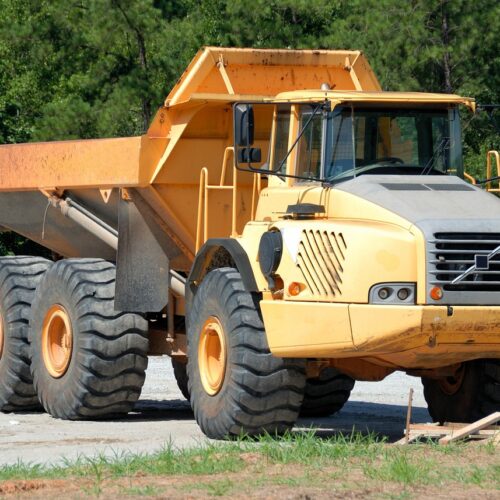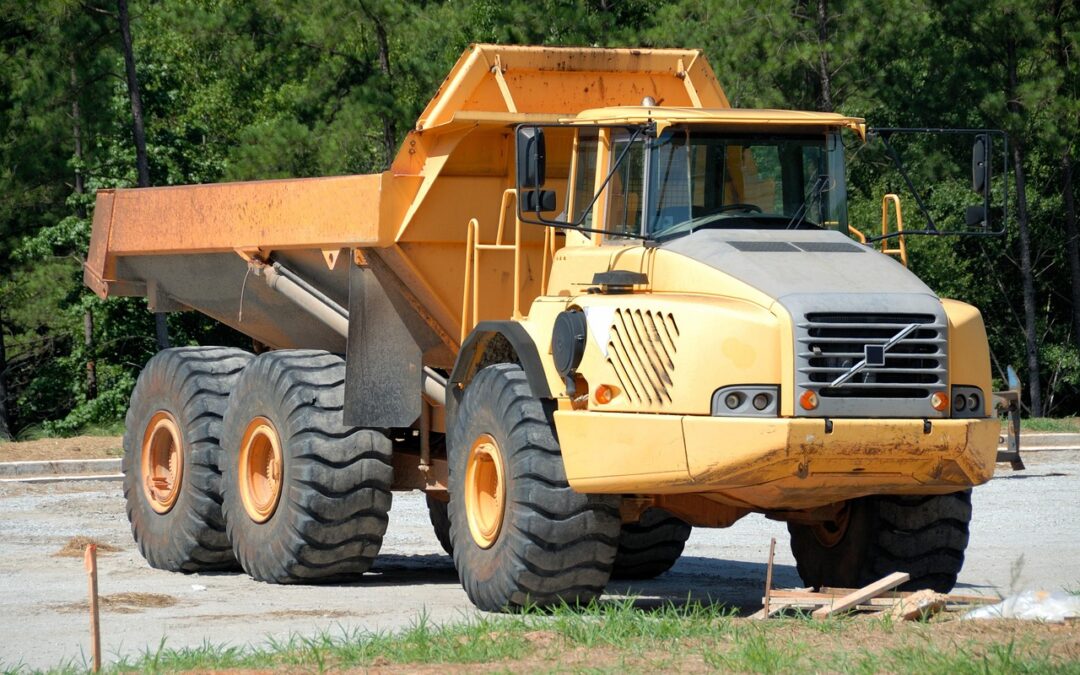Tires are one of the most critical components of mining equipment, enduring heavy loads, extreme conditions, and constant wear. Defective tires can lead to costly downtime, reduced productivity, and even safety hazards on the job site. Whether you’re managing a fleet of haul trucks or other mining vehicles, understanding how to spot early signs of tire damage and address them promptly is essential. In this article, we’ll explore the common types of tire defects found on mining equipment, how to identify them, and the best practices for maintaining tire health to ensure optimal performance and safety on the job.
Common Types of Tire Defects in Mining Equipment
Mining tires endure extreme conditions, making them susceptible to various defects. Some of the most common tire issues include:
- Cracking and Dry Rot – Caused by prolonged exposure to heat, sunlight, and chemicals, leading to weakened rubber and potential blowouts.
- Sidewall Damage – Cuts, abrasions, and bulges in the sidewall can lead to sudden tire failure.
- Tread Separation – Layers of the tire may begin to separate due to excessive heat or improper inflation.
- Punctures and Tears – Sharp rocks and debris can penetrate the tire, leading to slow leaks or rapid deflation.
- Flat Spots and Uneven Wear – Indicate improper alignment, overloading, or inadequate inflation.

How to Inspect Mining Tires for Early Signs of Damage
Routine tire inspections help detect issues before they escalate. Best practices for thorough inspections include:
- Visual Checks – Look for visible damage, cracks, and bulges on the tread and sidewalls.
- Tread Depth Measurements – Use a depth gauge to ensure proper tread levels for traction and stability.
- Inflation Pressure Monitoring – Check pressure regularly to prevent underinflation or overinflation.
- Temperature Monitoring – Overheating is a sign of excessive friction and potential failure.
- Wheel Alignment Checks – Misalignment leads to uneven wear and decreased tire lifespan.
Impact of Tire Defects on Mining Operations and Safety
Ignoring tire defects can lead to serious consequences, including:
- Equipment Downtime – Unexpected tire failures can halt operations, leading to financial losses.
- Worker Safety Hazards – Tire blowouts can cause accidents, endangering workers.
- Increased Fuel Consumption – Poorly maintained tires create higher rolling resistance, leading to excessive fuel use.
- Higher Maintenance Costs – Repairing damage caused by defective tires is more expensive than regular inspections and maintenance.
Preventative Measures to Extend the Life of Mining Tires
Taking proactive steps can significantly extend the lifespan of mining tires. Key preventative measures include:
- Regular Inspections – Identify issues before they become critical.
- Proper Inflation – Maintain manufacturer-recommended tire pressure levels.
- Load Management – Avoid overloading vehicles to reduce tire stress.
- Correct Tire Storage – Keep spare tires in a cool, dry environment away from direct sunlight.
- Scheduled Rotations – Rotate tires to ensure even wear across all wheels.
How to Properly Maintain Tires on Heavy Mining Equipment
Effective tire maintenance programs help reduce wear and extend operational efficiency. Best practices include:
- Cleaning Tires Regularly – Remove debris that can cause cuts and punctures.
- Using the Right Tires for the Job – Select tires rated for specific mining conditions.
- Monitoring Tread Depth and Wear Patterns – Identifying abnormal patterns helps detect alignment and balance issues.
- Training Maintenance Personnel – Ensure workers are skilled in tire inspection and maintenance techniques.
The Role of Tire Pressure Monitoring Systems (TPMS) in Preventing Defects
Tire Pressure Monitoring Systems (TPMS) play a vital role in ensuring mining tires remain in optimal condition. Benefits include:
- Real-Time Pressure Alerts – Prevents underinflation and overinflation issues.
- Temperature Monitoring – Detects overheating, reducing the risk of blowouts.
- Automated Data Logging – Helps track tire performance trends over time.
- Extended Tire Lifespan – Proper pressure maintenance reduces premature wear.
What to Do When Tire Defects Are Detected: Repair vs. Replacement
When a tire defect is found, determining whether to repair or replace it is crucial. Consider the following:
- Minor Damage (Repairable) – Small punctures and tread wear can often be fixed using patches or plugs.
- Major Structural Issues (Replacement Required) – Large cracks, sidewall bulges, and tread separations require full tire replacement.
- Cost vs. Safety Assessment – If a tire poses a safety risk, replacing it is the best option despite the cost.
Cost of Tire Defects and How to Minimize Financial Loss
Tire-related failures contribute to unexpected expenses in mining operations. Ways to minimize costs include:
- Investing in High-Quality Tires – Longer-lasting tires reduce replacement frequency.
- Implementing Routine Inspections – Early defect detection prevents catastrophic failures.
- Training Operators on Proper Usage – Reducing harsh braking and overloading prevents excessive wear.
- Using Retreading Services – Extends the usability of tires at a lower cost than purchasing new ones.
Best Practices for Training Equipment Operators to Identify Tire Issues
Operators are the first line of defense against tire defects. Training should include:
- How to Recognize Early Signs of Tire Damage – Encouraging daily walkaround inspections.
- Importance of Proper Tire Usage – Avoiding excessive braking and sharp turns.
- Reporting Procedures – Ensuring issues are logged and addressed promptly.
- Understanding TPMS Readings – Educating operators on interpreting pressure and temperature data.
Key Takeaways for Managing Tire Defects in Mining
Managing tire defects is essential for maintaining safe and efficient mining operations. Key takeaways include:
- Routine Inspections are Critical – Early detection prevents costly failures.
- Proper Inflation and Load Management Extend Tire Life – Prevents unnecessary wear and breakdowns.
- Training Operators Enhances Safety – Knowledgeable staff can recognize issues before they escalate.
- TPMS is a Valuable Tool – Technology improves monitoring accuracy and maintenance efficiency.
By implementing these best practices, mining companies can reduce downtime, increase safety, and maximize tire longevity.

